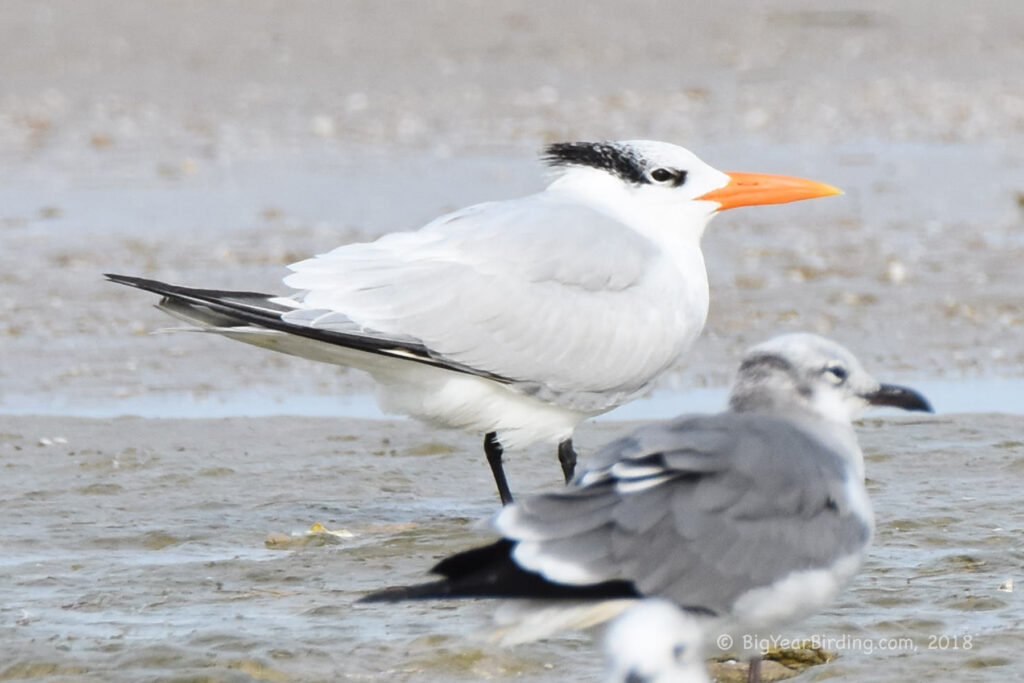
The Royal Tern is a medium-sized seabird, measuring about 18-21 inches in length with a wingspan of 43-44 inches. They weigh around 17-19 ounces, making them one of the largest tern species in North America. They have a distinctive black cap on their heads during breeding season, which contrasts with their white forehead, belly, and tail. They also have a long, sharp, orange bill and orange legs. Outside of breeding season, their black cap fades to a mottled gray color.

One of the key distinguishing field marks of the Royal Tern is its large size and distinctive black cap, which is only present during breeding season. They are often seen in groups along the shoreline, where they dive headfirst into the water to catch fish. They have a graceful, buoyant flight and can be identified by their long, pointed wings and forked tails. They are often seen in flight with other tern species, such as the Sandwich Tern and Forster’s Tern.
Royal Terns breed along the southeastern coast of the United States, from Virginia to Florida, and along the Gulf Coast to Texas. They also breed in the Caribbean, Mexico, and South America. During the non-breeding season, they migrate to the coasts of Central and South America, as far south as Argentina. Some birds may also remain in Florida and the Gulf Coast during the winter.
Royal Terns are considered to be a species of least concern by the International Union for Conservation of Nature. However, like many seabirds, they face threats from habitat loss and degradation, pollution, and climate change. Conservation efforts are underway to protect their breeding and foraging habitats, including the establishment of protected areas and the removal of debris from nesting sites.

Overall, the Royal Tern is a striking and iconic bird of the southeastern and Gulf Coasts of the United States. Their large size, distinctive black cap, and graceful flight make them a favorite among birders and beachgoers alike. Understanding their migration patterns and conservation needs is essential for ensuring their continued presence in our coastal ecosystems.

